|
Home Crosses of Unknown Origin Crosses Requiring Verification
MALTESE CROSSES REQUIRING VERIFICATION
Below are examples of 'different' Maltese Crosses on dated covers,
but we have seen only these single examples. Have you seen others?
TORRINGTON
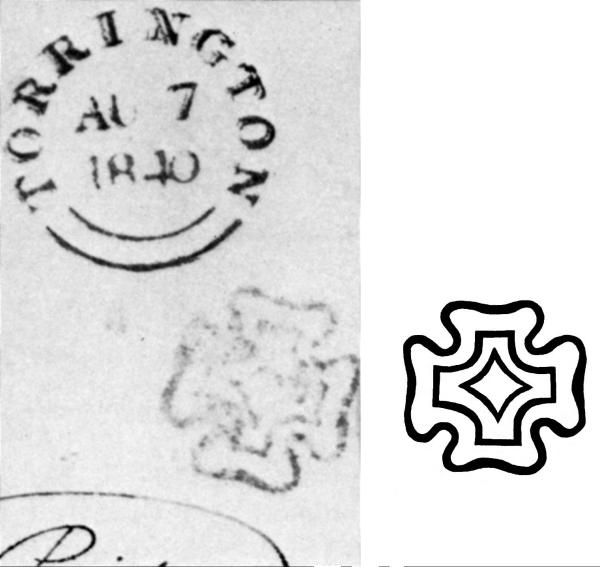
On 7 August 1840 Torrington was using an obliterator that produced
a very different appearing Maltese Cross with very short arms to the
inner cross with flat end plates and no end plate points, and a
relatively large diamond without points.
The Christie's description stated 'a good strike [of the Torrington
cross] on unstamped part E. to Cattistock (7-8-40), manuscript "Paid"
and "1" (in red)'.
Christie's, 13 Mar. 1990, Lot 1462
RUGBY

On 21 May 1840 Rugby was using an obliterator that apparently had a
large area of debris filling between the outer and inner crosses,
as is seen on three strikes of the obliterator on this Mulready.
Chris Jarvis Collection
CARNEW
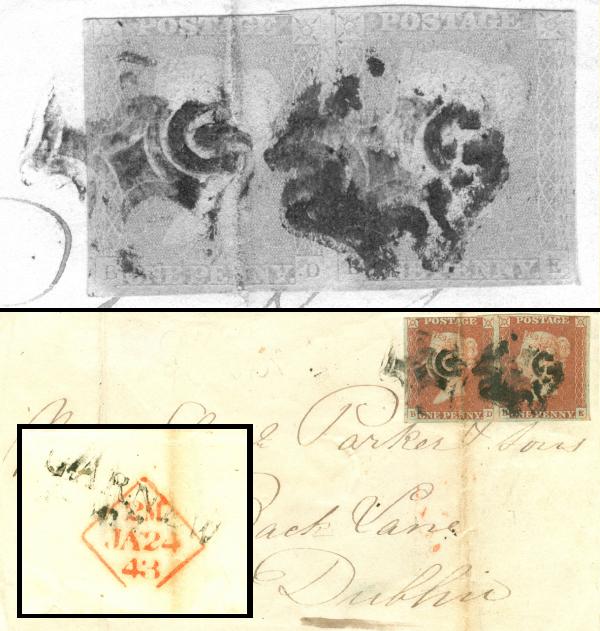
Carnew is a small town around 45 miles south of Dublin and was
assigned Numeral 101 in 1844, suggesting that it had its own
obliterator during the Maltese Cross era. On 24 January 1843,
Carnew was using an obliterator that produced two bizarre-appearing
strikes, both of which have some degree of opacification
of the diamond and opacity to various degrees within margins of the
inner-outer cross, resulting in a kind of negative effect. This is seen
clearly in the strike on
adhesive stamp BD and is confirmed in the strike of BE allowing
for the fact that this right hand cross is a double strike of the
obliterator. The appearance of the opacification of the
crosses is not typical of debris-filled crosses since there is no
mottling of opacity. Instead, there is the appearance of watery ink
effects (i.e. translucency, two densities of ink and minimal
extension of the ink beyond normal margins in one of the strikes).
The despatch stamp is a Carnew mileage mark without c.d.s. The
date of the cover is taken from the receipt Dublin date stamp.
1d red, BD-BE
S. David Rockoff Collection
Item I on the Unknown Origin page shows similar characteristics, as
does another off-cover example. All three are presented below, together
with the diagram which accompanies Unknown Item I.
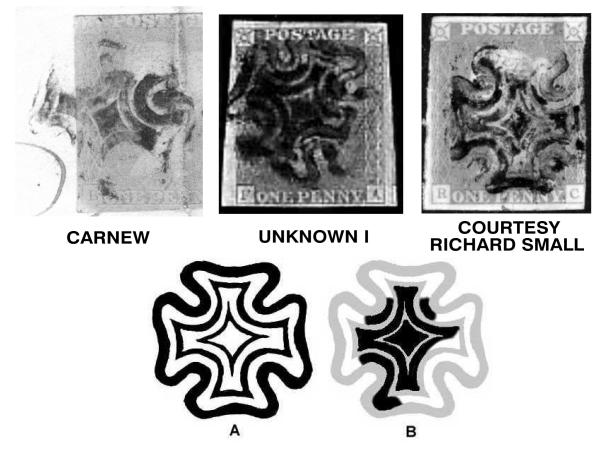
RATHOWEN
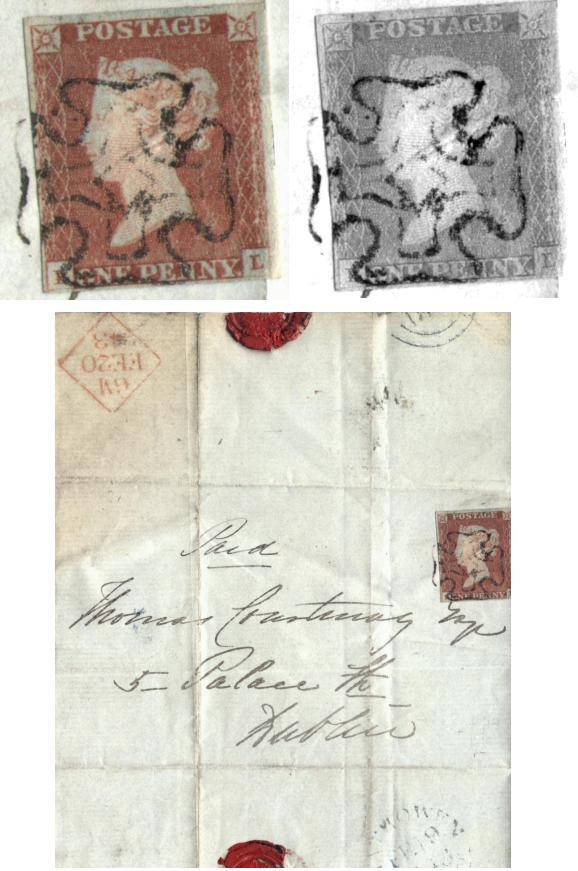
This cross from Rathowen has the following characteristics:
1. Flat
end plates to inner cross.
2. Diamond sides are flat (no curvatures as
is usual).
3. The outer cross side in the direction of the letters on
the adhesive stamp is different from the other three sides in that it is
'flattened' like a pancake sitting on the cross, with rather pointed ends
to the outer cross sides.
4. A suggestion of a 'balloon' effect of the
outer cross (but without thinning at the ends).
1d red, ?L
Anthony Smith Collection
CRICKLADE
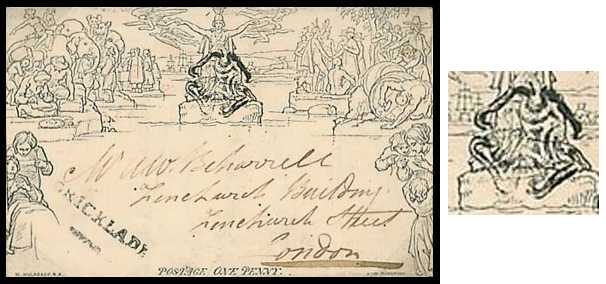
A double-lined cross used on a Mulready from Cricklade on 24-25 July
1841.
1d Mulready
Cavendish Auctions, 26 Nov. 2004, Lot 1079
BANAGHER
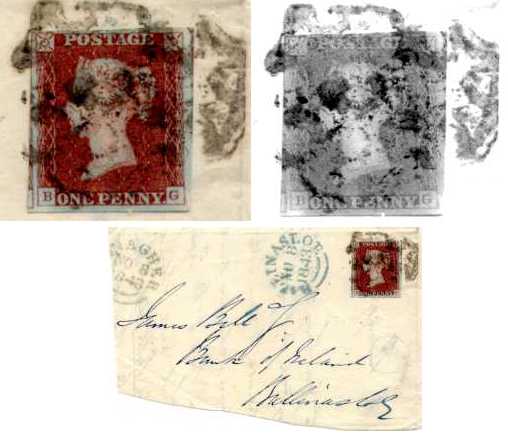
This cover from Banagher, sent on 8 November 1843, has three strikes of
the same abnormal cross.
1d red, BG
S. David Rockoff Collection
WEST BROMWICH
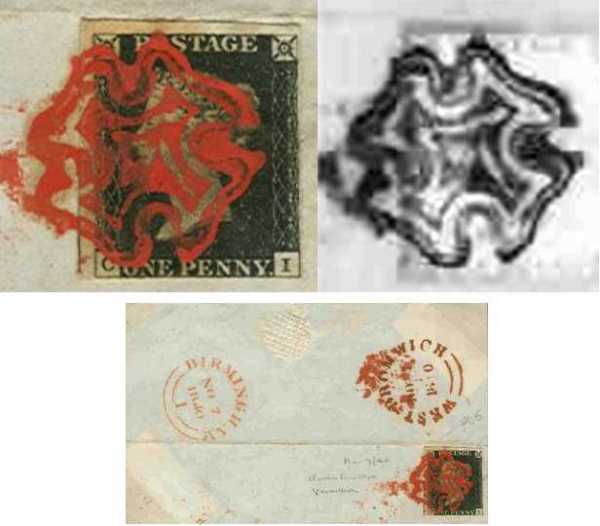
On 7 November 1840, West Bromwich was using a prominently double-lined
Maltese Cross. In addition, it shows a circular ink pattern in the diamond
centre. Although only a cover piece with two c.d.s. strikes on it, West
Bromwich is obviously the despatch post office since the ink of that
c.d.s. strike is identical to the ink used in the Maltese Cross
cancellation.
1d black, Plate 1b, CI
S. David Rockoff Collection
CLIFTON
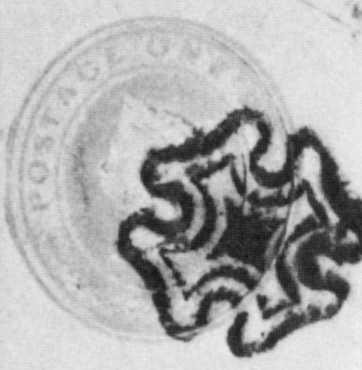
Clifton to London. The 1979 Robson Lowe catalogue description said
‘Clifton: (solid centre), cancelling a 1d. pink envelope to London
(20-9-43) showing on reverse circular undated “CLIFTON”’
1d pink envelope
RL, 27 June 1979, Lot 797; CHR, 6 Sept. 1988,
Lot 1380
ALFRETON
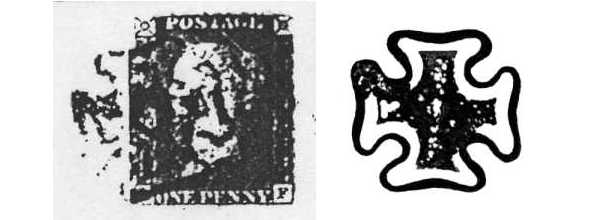
Cover sent on 25 May 1841 from ALFRETON (Derbyshire, England) to
London. This cross belongs to the family of crosses with an ‘Opaque Inner
Cross’.
1d red, Plate 10, TF
Bill Barrell price list, c.1993 (’ex
Alcock’)
BUSHMILLS

Bushmills to Ballymoney. Bushmills c.d.s. 10 Aug. 1842; Coleraine
c.d.s. 10 Aug. 1842. Large diamond with very long points and a cove loop
effect to the outer cross loops.
1d red, Plate 25, DD
Mark Bloxham (Ex Moxter)
THIRSK
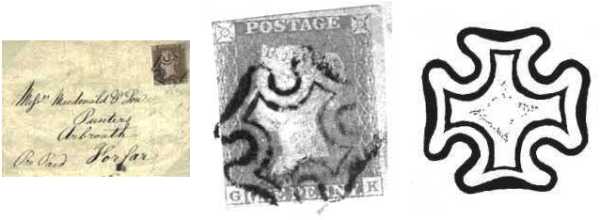
Cover sent from Thirsk to Forfar dated 30 July 1841, showing a cross
with a very weak diamond.
1d red, Plate 9, GK
Mark Bloxham

|